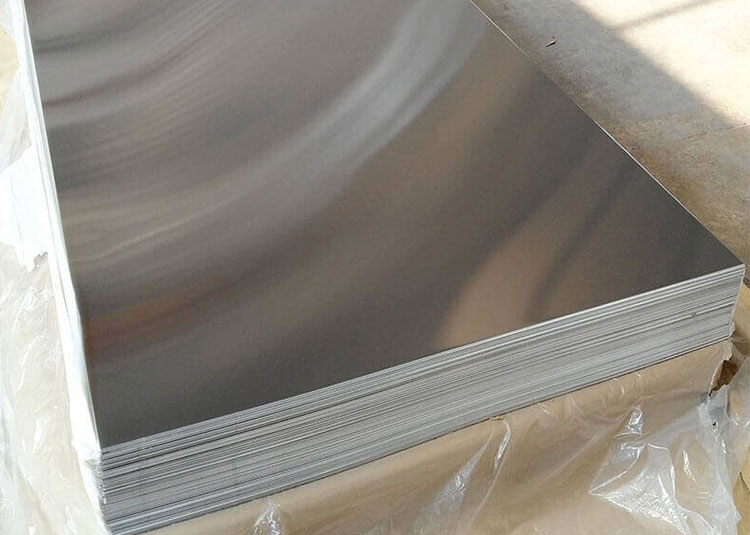T6 T651 7075 Aluminum Plate
When it comes to aluminum alloys, the 7075 series continually stands out for its exceptional strength-to-weight ratio—a prized characteristic that dominates aerospace, military, and high-performance engineering sectors. Among its various tempers, the T6 and T651 tempers represent critical processing conditions that unlock the alloy’s true potential. In particular, the T6 T651 7075 Aluminum Plate offers an intriguing blend of metallurgical sophistication and practical durability, catering to applications that demand high strength, fatigue resistance, and toughness.
Why T6 T651 Temper Matters for 7075 Aluminum Plate
Aluminum 7075 is an alloy known primarily for its presence of zinc (around 5.6-6.1%), which acts as the principal strengthening element along with magnesium, and a small dose of copper. However, alloy composition is just one part of the story. The temper finish—designated here as T6 and T651—describes a specific heat treatment and mechanical stress process crucial to the performance of the plate.
- T651 Temper refines this further. After the solution heat treatment and artificial aging, the material undergoes a stretching process to relieve residual stresses from quenching. This additional step dramatically reduces distortions in machining and improves dimensional stability during service.
Most users choose T651 when critical mil-spec or aerospace components require extreme precision alongside muscle.
Implementation Standards & Specifications
If you source or specify T6 T651 7075 Aluminum Plates, expect them to conform to international and military standards such as:
- ASTM B209 (the standard specification for aluminum and aluminum-alloy sheet and plate).
- AMS 4045 (aviation specification for 7075 aluminum alloy sheet, plate, and extrusion).
- MIL-DTL-24742 (United States military specification for aluminum alloy extruded shapes, covering parts ebe manner).
These standards ensure tested mechanical properties, consistency in chemical composition, and controlled defect levels such as homogeneity and flatness.
Chemical Composition of 7075 Aluminum Alloy
| Element | Percentage (%) |
|---|---|
| Zinc (Zn) | 5.6 – 6.1 |
| Magnesium (Mg) | 2.1 – 2.5 |
| Copper (Cu) | 1.2 – 1.6 |
| Chromium (Cr) | 0.18 – 0.28 |
| Silicon (Si) | ≤ 0.4 |
| Iron (Fe) | ≤ 0.5 |
| Manganese (Mn) | ≤ 0.3 |
| Titanium (Ti) | ≤ 0.2 |
| Zinc + Copper + Magnesium total | ≥ 8.3 |
| Aluminum (Al) | Balance (approx. 90%) |
This tightly controlled chemistry maximizes mechanical performance while reassuring manufacturers of predictable welding and corrosion behavior.
Mechanical and Physical Parameters
Typical Features of T6/T651 Temper 7075 Aluminum Plate:
| Property | Value |
|---|---|
| Density | 2.81 g/cm³ |
| Ultimate Tensile Strength | 572 MPa (83,000 psi) |
| Yield Strength | 503 MPa (73,000 psi) |
| Elongation at Break | 11% (on some products) |
| Hardness (Brinell) | ~150 HB |
| Modulus of Elasticity | 71.7 GPa (~10,400 ksi) |
| Fatigue Limit | ~159 MPa (in reversed bending) |
| Thermal Conductivity | 130 W/m·K |
| Electrical Conductivity | 34 % IACS (International Annealed Copper Standard) |
T651 temper enhances resistance to stress corrosion cracking—a significant advantage in aircraft structural parts and high-load tooling.
Applications: Stars Beyond the Sheet
The T6 T651 7075 Aluminum plate is far from a generic metal: its precise processing conditions render it suitable for:
- Aerospace Components: Wing structures, fuselage frames, and landing gear requiring superior strength and fatigue resistance.
- Military Hardware: Helicopter components and armor plating that must sustain rigorous mechanical stress.
- Motorsports and High-End Automotive: Chassis and suspension parts where weight reduction versus structural integrity is essential.
- Precision Machinery: Tool holders, molds, and jigs valuing fine dimensional stability.
- Marine Applications: Where saltwater corrosion and strength combine in unique challenges.
The Natural Edge of Quality-Controlled Aluminum Plate
Using 7075 aluminum plates in T6 T651 temper brings not only mechanical excellence but dimensional stability and process repeatability. Its resistance to deformation after machining significantly improves throughput by reducing secondary finishing needs — a decisive advantage in high-volume competitive manufacturing systems.
Obviously, the temper’s nuanced role controls product life cycle before design even begins. From first alloy composition batches to delivered plates ready for shaping, every factor impacts longevity and performance: heavy machinery, precision tools, or complex aircraft parts rely on such stringent, certified conditions.
https://www.alusheets.com/a/t6-t651-7075-aluminum-plate.html


